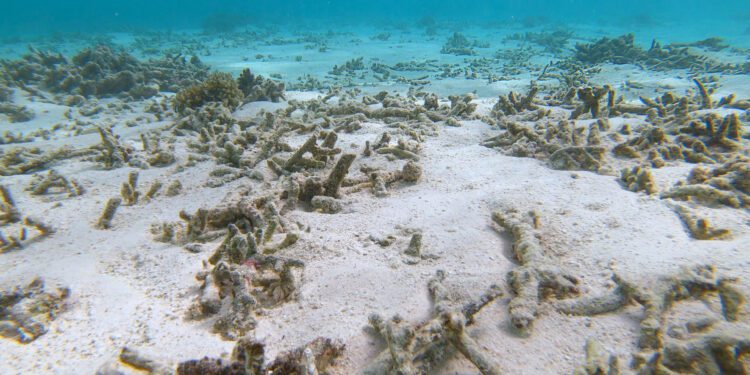The U.S. government’s Coral Reef Watch program has added three new alert categories, as existing levels weren’t “reflecting just how extreme it was getting,” said Director Derek Manzello.
The previous alerts encompassed four stages, with the highest rating at 8 “degree heating weeks” (DHW) or above. 1 DHW correlates to corals being exposed to temperatures 1C above the usual maximum for seven days. Last year, summer in the northern hemisphere saw large areas experience heat beyond 8 DHWs, with some areas experiencing more than 20 DHWs. Now, new alert levels 3, 4 and 5 correspond to DHWs of between 12 and 16, DHWs of between 16 to 20, and DHWs above 20, respectively.
“We are entering a new world in terms of heat stress where the impacts are becoming so pervasive that we had to rethink how we were doing things,” Manzello said. “When you exceed a DHW value of 20 it is analogous to a Category Five cyclone, with unbelievably severe, drastic damage. It’s the worst case scenario.”
According to Rickard Leck, leader for oceans at WWF-Australia, the new system shows “that ocean temperatures and the risks to coral reefs are literally off the charts. It’s also an incredibly powerful reminder that global heating is impacting our oceans in the here and now in ways unimaginable only a decade ago.”












